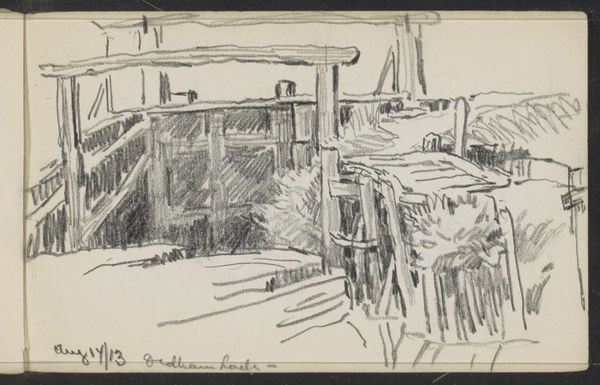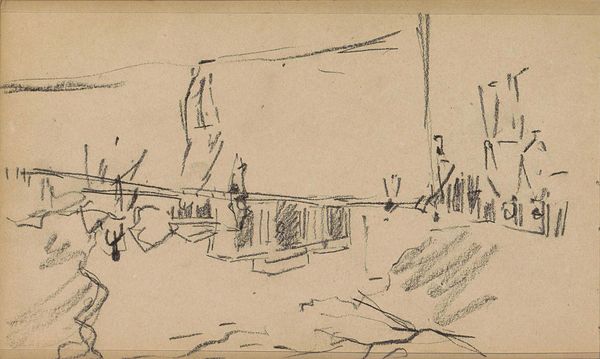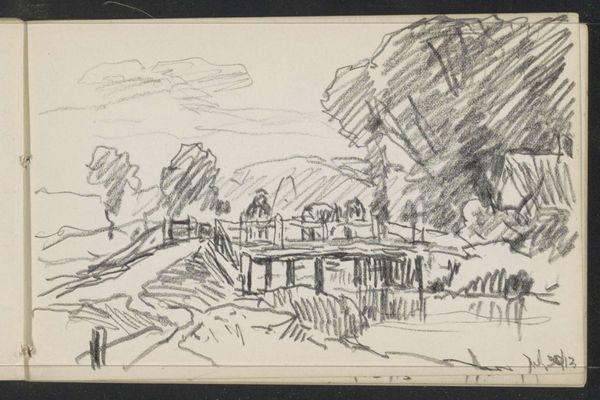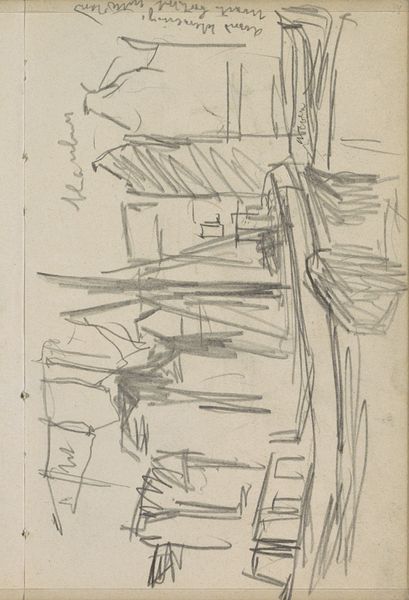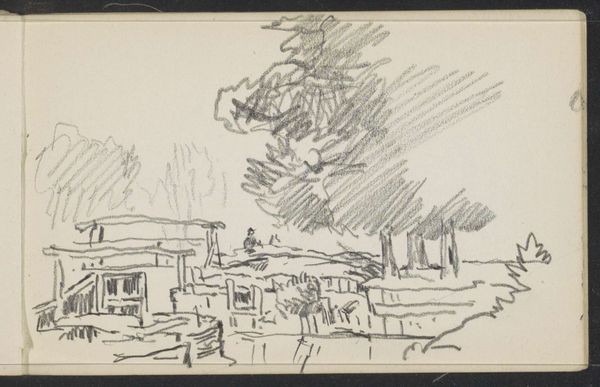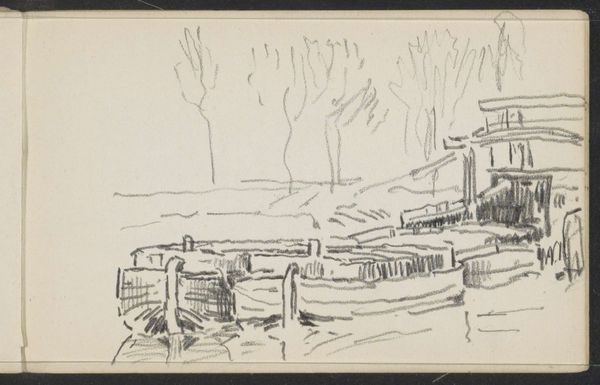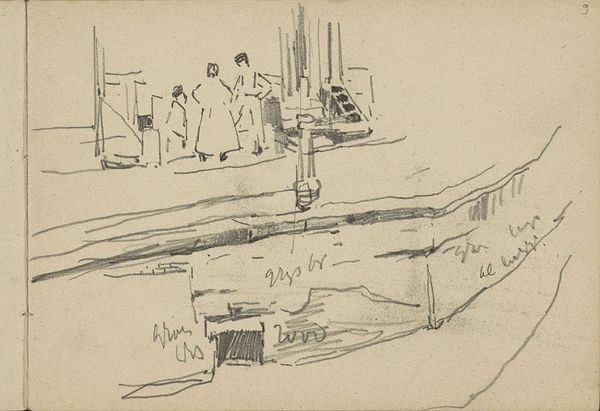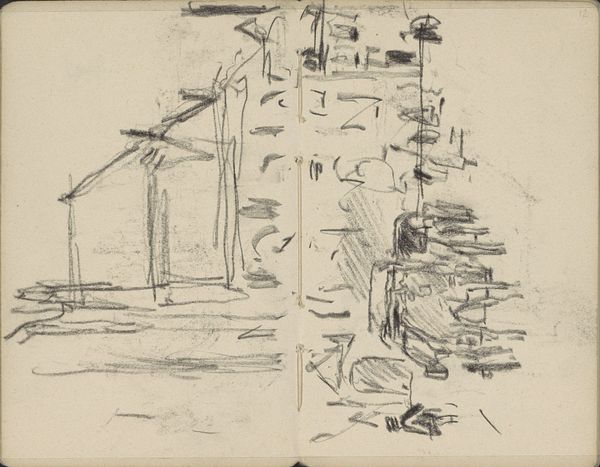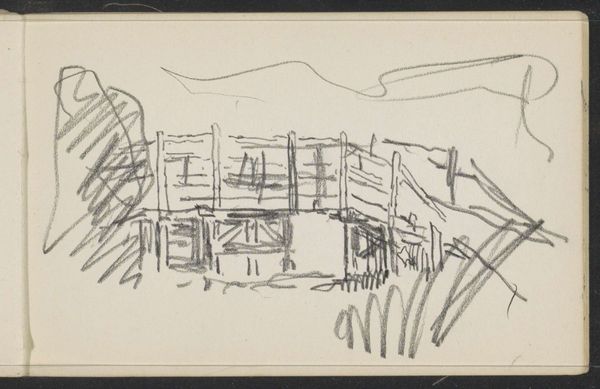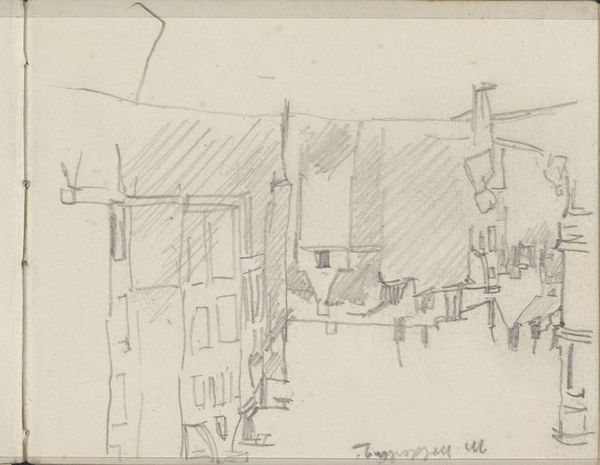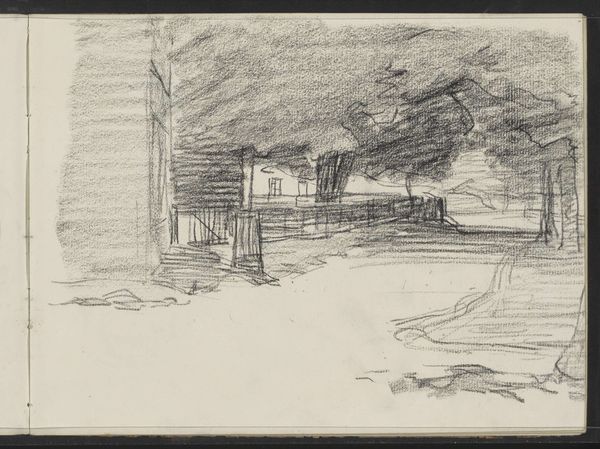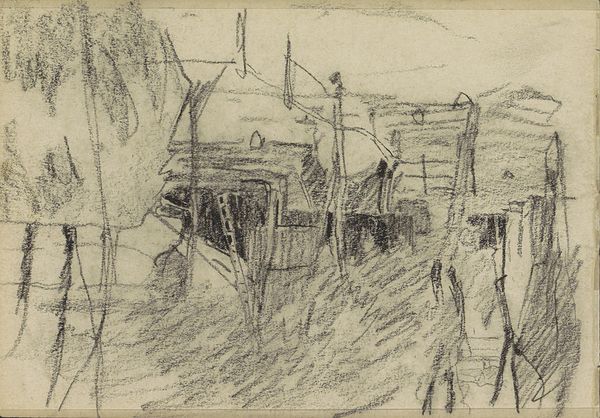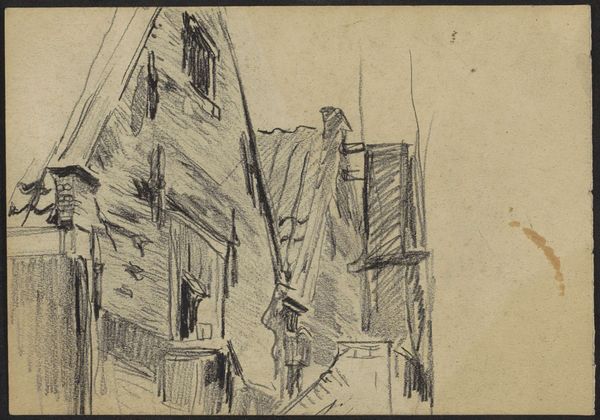
drawing, pencil
#
drawing
#
ink drawing
#
pen illustration
#
pen sketch
#
landscape
#
geometric
#
pencil
#
line
Copyright: Rijks Museum: Open Domain
Curator: Here we have Alexander Shilling’s, "Sluis bij Dedham", likely made between 1913 and 1917. It is a delicate landscape rendered in pencil and ink, capturing a lock or sluice gate near Dedham. Editor: My immediate reaction is one of serene quietude. The composition, even in its sparseness, gives the impression of a very still, slightly melancholy day. The artist used such economy of line! Curator: The limited palette and reliance on line are very intentional, reflecting the period’s experimentation with form and the exploration of working-class leisure. What do the materials tell us? Pencil and ink denote accessibility. These were democratic media accessible to all, and challenge established art production that valorized paintings as more worthy objects. Editor: Yes! It is very democratic but something more too; like an echo of memory. You can almost smell the damp wood and hear the gentle lapping of water. But it is the angles created that capture my imagination, making an architectural framework with an artistic flourish. The shapes seem functional but are far from clinical. Curator: That aligns with Shilling’s own artistic evolution, from more traditional landscape paintings to these intimate sketches. Consider the labor involved— the specific mark-making needed to give shape to the whole structure. Editor: I see an interplay between structural purpose and an appreciation for simple lines of natural surroundings. A visual representation of where utility meets a kind of unforced beauty, wouldn’t you agree? Curator: Exactly! It also speaks to an appreciation of labour and manufacturing—how they physically changed landscape during the industrial era in Europe, yet were part of life as people knew it. Editor: It really demonstrates that even mundane settings are brimming with untold aesthetic wonder, we only need to stop and actually perceive. A fresh way of thinking in some ways. Curator: Well, that kind of subversion is precisely where this piece finds value for modern audiences! Editor: I think so too. A lovely journey to appreciate beauty anew in even the most subtle landscape or, perhaps the next canal.
Comments
No comments
Be the first to comment and join the conversation on the ultimate creative platform.
